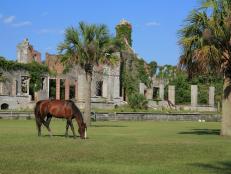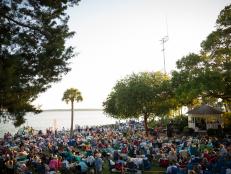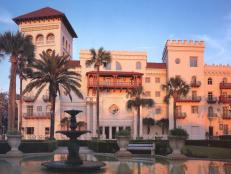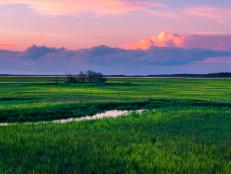Discover Where History Was Made on St. Simons Island

Photo By: Johnson Pictures Inc., GoldenIsles.com
Photo By: Johnson Pictures Inc., GoldenIsles.com
Photo By: Chris Bordeleau, GoldenIsles.com
Photo By: GoldenIsles.com
Photo By: GoldenIsles.com
Photo By: Johnson Pictures Inc., GoldenIsles.com
Photo By: GoldenIsles.com
Photo By: GoldenIsles.com
Photo By: GoldenIsles.com
Cassina Garden Club Slave Cabins
The Cassina Garden Club were deeded the property in 1950 and proudly took on the role of land stewards, restoring the two remaining cabins with as much historic accuracy as possible. Their work earned the cabins a place on the National Register of Historic places in 1988.
Fort Frederica National Monument
James Oglethorpe built the fort in 1736 to protect the southern border of Georgia from the encroaching Spanish. Overlooking the Frederica River, the military outpost gave the British an important vantage point from which they could control the inland passage up the coastline and operated as a hub of military operations for more than a decade. Most notably, the fortified walls proved impenetrable by the Spanish during the Battle of Bloody Marsh in 1742. Shortly after that British victory, the fort disbanded.
Today, visitors walk among the fort’s archaeological remnants that include the ruins of the palisade walls, the magazine where gun power was stored and a soldiers’ barrack. The property, which is managed by the National Parks Service, also includes burial grounds from the 1700s, with ancient tombs emerging from layers of natural overgrowth.
Christ Church
Built in 1820, Christ Church is the second oldest Diocese in Georgia and regarded as one of America’s most beautiful churches—and most photographed. The quaint chapel not only serves as a memorial to John and Charles Wesley, the founders of the Methodist Church who delivered sermons there under a magnificent oak, but also to a young man’s lost love.
After Union forces nearly destroyed the church during the Civil War, 24-year-old Rev. Anson Dodge, Jr. financed its reconstruction in honor of his wife, Ellen, who died unexpectedly on their honeymoon. Anson had her buried beneath the altar. The peaceful and pristine grounds also bear one of the oldest cemeteries in the state, where a number of well-known Georgians rest, including novelist Eugenia Price.
Avenue of Oaks
St. Simons Lighthouse
The keepers’ brick cottage at the base of the lighthouse has been converted into a popular museum, but the 129-step to the top of the tower is well worth the breathtaking, panoramic view of the Golden Isles.
Rooted in the South
Ebo Landing
In 1803, a slave ship made the harrowing trek through the Middle Passage and landed in Savannah, Georgia, to be sold at the slave market. There, some of the African people known as the “Igbo” (also spelled Ebo or Ibo) were purchased and sent by boat to a plantation on St. Simons Island. En route, the Africans united and rebelled, sending their captors overboard. From there, the story of the Igbo’s landing on Dunbar Creek diverges along several paths.
One written account claims that the Africans immediately walked into the creek, proudly singing, “The Water Spirit brought us, the Water Spirit will take us home,” and drowned themselves. Other stories claim only a few drowned, and the survivors were re-enslaved or relocated. But another account, handed down by African American oral tradition, is known as the “Myth of the Flying Africans,” and has been immortalized by notable writers like Toni Morrison, Alex Haley and Jamaica Kincaid, to name a few. According to the legend, the Africans transformed into buzzards and flew back to Africa. While a historical marker does not yet officially designate the private property on which Ebo Landing exists, it will forever be an important piece of African America.
Wesley Memorial and Gardens
The brothers came to Georgia in 1736. And while Charles was revered as a poet and writer who penned well-known hymns like “Hark the Herald,” and served as Oglethorpe’s secretary of Indian Affairs, John would be remembered as the founder of American Methodism.





